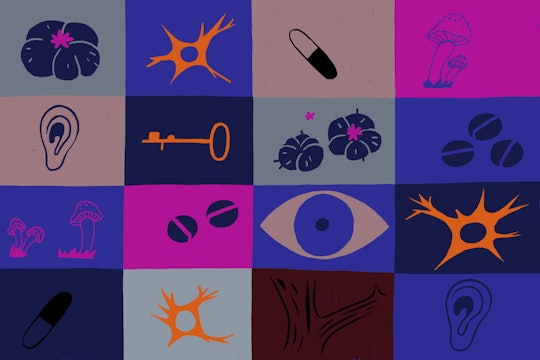
A brief history of psychedelic research, from LSD to psilocybin
A ban long stymied what started as a promising field
Throughout the 1950s, the potential therapeutic effects of LSD were studied in the United States and in Europe. After the Controlled Substances Act became law in 1970, the main agency providing grants for research on psychedelics, the National Institute of Mental Health (NIMH), stopped funding studies into their therapeutic potential.
At the same time, getting approval from the Drug Enforcement Agency (DEA) to possess some of the drug, even for preclinical studies, became nearly impossible to obtain. As a result, research into the therapeutic uses of psychedelics including LSD stopped abruptly — to the surprise of many people. Even US Senator Robert Kennedy was startled by the sudden halt of research into the therapeutic potential of LSD, perhaps because his wife, Ethel, had reportedly received LSD therapy.
Kennedy started a congressional probe into why psychedelic research was being stopped, and is quoted addressing the predecessor of the DEA with the question:
Why if [clinical LSD projects] were worthwhile six months ago, why aren't they worthwhile now? I think we have given too much emphasis and so much attention to the fact that it can be dangerous and that it can hurt an individual who uses it that perhaps to some extent we have lost sight of the fact that it can be very, very helpful in our society if used properly.
He did not receive an answer, and the efforts continued to stop LSD research.
While this debate occurred, a more sinister set of experiments began in the background. The CIA began a secret project codenamed MKUltra in 1953.
Against a backdrop of Cold War paranoia, the CIA set out to identify avenues of mind control to use for espionage, interrogation, and psychological torture.
Increasingly, MKUltra focused on the use of psychedelic drugs — particularly very high doses of LSD — in illegal experiments where people in universities, hospitals, or prisons in the US and Canada were given the drug unknowingly or against their will. The program was disbanded in the 1970s, but not until after most of the documentation was destroyed in a post-Watergate frenzy, making it difficult to know the full extent of the damage done to unwilling participants. In 1977, a Senate Subcommittee chaired by Ted Kennedy investigated MKUltra, and called a final halt to the project.
Due to their scheduling regulations, psychedelics like LSD and psilocybin are still difficult to get approval to study and face pushback from grant funding agencies and the public due to the perception that drugs are dangerous. Preclinical research on psychedelics can sometimes circumvent these restrictions by instead studying a drug that is not scheduled, like 2,5-Dimethoxy-4-iodoamphetamine (DOI). But research compounds like DOI don't have the same established history of therapeutic potential for humans as LSD and psilocybin do.
The inclusion of psychedelic drugs in Schedule I and the end of research into their medical applications have contributed to the public perception that the drugs are dangerous. Among young adults, the perceived risk of trying LSD once or twice in their lifetime is higher than that of binge drinking weekly, in stark contrast to the actual biological risks.
This discord between perceived and actual risks is especially striking considering that serious side effects from LSD are extremely rare, while alcohol directly contributes to 88,000 deaths per year in the US alone.
